This past week at CES, Suunto introduced not one but two different products. Of course, it’s the Spartan Wrist HR watch that got most of the attention, complete with distracting green lights. But it was the almost not even mentioned Movesense announcement that might be more interesting longer term.
Much like Polar’s heart rate strap announcement, the Suunto strap at first appeared to be just another strap. But like Polar, once you peeled back the onion layers, it became apparent it was far more than just another strap. I got a bit of hands-on time with the unit and sat down to chat with the team behind it. Let’s dive into it.
What it is?
It’s easy to mistake the small pod: Isn’t that just a translucent Suunto pod with a blinky light?
And while yes, it is somewhat see-through, and yes, it’s the same size and round cookie-like shape of past pods, it’s totally different inside. Here’s the list of new goodness stuffed inside the Oreo:
– Accelerometer (common in new straps these days)
– Gyroscope (not common)
– Magnetic orientation (aka a compass, not common)
– Temperature sensor (unheard of in a HR strap)
– Storage for recording data (common in new higher end straps)
– ‘Medical grade’ ECG chip (debatable)
– Pin awareness (unheard of in a HR strap)
– Magic fairy dust
What’s that magic fairy dust you ask? I’ll come back to that in a second.
As is probably apparent by the list of technology above (further details in their site’s PDF), the purpose of this strap is to act as far more than a heart rate sensor (which it still does). Rather instead, to act as a data collector sensor. One that may not even be worn as a chest strap at all. In fact, Suunto really doesn’t see this as a heart rate sensor play. The play here is focused on capturing sensor data and making it available to 3rd parties.
Of course, that 3rd party piece requires some form of API or SDK (Application Programming Interface/Software Development Kit), which Suunto surprisingly delivers upon here. Suunto is already shipping what they call the ‘Dev Kit’ version of this unit, allowing developers (or just hobbyist tinkerers) to dive into leveraging the sensors. They actually introduced this last month at an event for developers in Finland, where the team says they were flooded with interest.
Within the Movesense platform, companies (or individuals) can write programs that run within the strap to record data to the pod, most notably sensor and movement data – but even data from connected devices on the back of the pods connectors. From there the companies can offload that data into their own applications (via Bluetooth Smart), or down the road be able to leverage the Suunto Movescount platform to store and visualize that data.
So what about that Magic Fairy Dust? Well, that integrates with the pin awareness I mentioned earlier. Specifically, the pod itself can communicate to accessories via the connectors on the back of the pod. Now obviously it does this to connect to something like a HR strap, but it can also be leveraged into other wearable clothing applications. Or heck, even something like a pair of skis that can measure flex. But the real piece of Magic Fairy Dust is that Suunto is allowing folks to implement DRM-style validation checks. Meaning, a company could actually restrict their specific Movesense pod to only work on their own equipment/products. DRM (Digital Rights Management) is of course the much-hated software mechanisms that music and movie entertainment companies leverage to make it difficult to copy music/videos (even for legitimate purposes, like backup).
Though, Suunto argues that’s really not their purpose here – and they themselves don’t really have any plans for leveraging that piece of the technology. Instead, it’s just showing the capabilities of the platform and what might appeal to various 3rd party entities. Portions of that technology can also be leveraged for giving a sensor awareness of what it’s connected to. For example, is the pod attached to a chest strap, or a bike seat?
And that’s key to understand. Suunto is largely positioning this today as a B2B play, focused on offering the platform to smaller companies, such as startups, that would have to spend significant sums of money to create a basic sensor platform like this. And that’s certainly true. This is effectively a Raspberry Pi-esque fitness sensor platform that’s hardened for the outdoors/sports. Suunto knows how to do that hardening, and has manufacturing capabilities that far exceed what virtually any startup has access to.
Companies can re-brand these pods however they’d like, and purchase them in bulk – even 10,000 units if they’d like to. Alternatively, they can also work with Suunto to purchase smaller quantities.
In fact, all there is today are dev kits. Suunto isn’t yet making a full-on consumer version of the pod, though they expect to see that happen eventually. They’ll likely follow in the footsteps of Garmin, Wahoo, and Polar – and simply wrap it up as their next-gen HR strap. Suunto says that once they do, it’ll be priced basically the same as their existing straps today, which float between $50 to $100USD.
An Example Case Study:
Sure, Suunto has two different case studies on their site, demonstrating 3rd party companies already using the platform. And that’s cool and all. But sometimes I find the hobbyist-style case studies are easier to grasp, and quite frankly more fun.
Ironically enough, this example comes from one of the lead product managers, who took to outfitting his kid’s hockey team with sensors. This in turn allowed him to collect a crap-ton of data, which he actually uses being the coach of the team. It’s both geeky cool and perhaps a tiny bit over the top. But again, in a geeky-cool kinda way. Here’s the sensors, which were attached to the should pads on each kid:
From there I got to see an impressive 428-page PowerPoint slide deck on the astounding amount of data collected for each kid (ok, it was only like 231 pages). For example everything from how much playing time each kid got on the ice, to the effort each kid was putting out. This then allowed him as a coach to ensure that the players were getting even time on the ice (still young enough for that), as well as not overexerting players.
He was even able to start creating metrics showing fatigue levels of the different players concurrently by mapping sensor data within different practice sessions. That then allowed him to better understand how players fatigued in games.
Of course, not everything in the above kids’ hockey data app is validated as part of some fancy scientific study. Instead, it’s allowing someone to easily collect data in a sports situation that would otherwise be difficult. This is just one example of how to use the data. Or, I suppose, an example of what happens when you give someone kinda like me too many gizmos and gadgets. Still, you get the point on how the tech could be used.
The long game:
So what’s the long game here?
Well, in some ways it’s Suunto acting like an incubator. And that’s not a bad thing. Sure, this takes away a couple of resources from other Suunto projects (literally, it’s just a few people), but it likely benefits both consumers and Suunto themselves in other ways not immediately obvious.
First up, the benefit to consumers (you) is that Suunto is becoming more exposed to the fitness/wearables startup space. They are also being “forced” to interface to 3rd party companies more regularly, and understand the benefits of doing so. I’ve often criticized that both Suunto and Polar have become too insular in their products/platforms. My hope here is that this trickles down/back/up/whatever into other Suunto platforms/products. For example, maybe we’ll see them make Movescount (web site) more open than it is today. And in doing so, that’d benefit consumers.
Next, we’ve got the benefit to Suunto themselves. They’ve been pitching the Movesense strap design for a while as the next generation strap/pod. And there has indeed been some pickup of that – we’ve seen a handful of other companies adopt it. But that’s all been for straight heart rate data. This time, they’re pushing into being the go-to for a quick and simple sensor platform. And I think they’ll have more success in this area, since it’s a more unique offering than just another heart rate strap. It can’t be overstated how much time/money this would save a startup that just needs sensor data, but doesn’t want to get into the business of manufacturing said devices. CES this year was full of companies trying to do things with sensors that would love to cut out the manufacturing aspect of it if possible.
For example, look at the Pioneer bicycle sensor system outlined this past fall. While the Suunto pod doesn’t have strain gauges in it, it does meet the requirements for everything else Pioneer is doing. In many ways, this would be a perfect solution for those pods not needing strain gauges. The Suunto platform is designed to allow interoperability between multiple sensors (i.e. having a sensor on a shoe, another on a helmet, and another on the chest). Sure, Pioneer would want ANT+, but Suunto is using the Nordic nRF52832 chip, which is capable of ANT+ just fine, should Suunto enable it. Of course, Pioneer likely has no plans to switch – instead, this is me just giving some simple examples of how it could work with even mainstream companies.
Of course, whether or not Suunto’s platform succeeds remains to be seen. But the ‘cost’ to Suunto is relatively minimal, and I think the long term gain of them acting more like a startup than a watch company is good for consumers and Suunto themselves. Plus, as Suunto itself has seen over the past year – if you only focus on one thing/product, and don’t focus on the future, then as a tech company it doesn’t tend to turn out well. I think they’ve learned a lot from the Spartan series situation, and this looks to be an application of those learnings elsewhere in the company.
—
Catch all the CES 2017 posts here in one handy to read page. And fear not – there’s still tons more to come from (the massive backlog of) CES!
FOUND THIS POST USEFUL? SUPPORT THE SITE!
Hopefully, you found this post useful. The website is really a labor of love, so please consider becoming a DC RAINMAKER Supporter. This gets you an ad-free experience, and access to our (mostly) bi-monthly behind-the-scenes video series of “Shed Talkin’”.
Support DCRainMaker - Shop on Amazon
Otherwise, perhaps consider using the below link if shopping on Amazon. As an Amazon Associate, I earn from qualifying purchases. It doesn’t cost you anything extra, but your purchases help support this website a lot. It could simply be buying toilet paper, or this pizza oven we use and love.

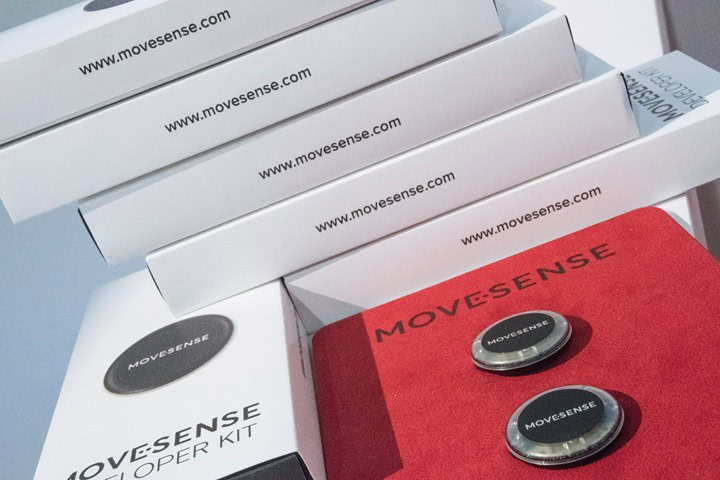
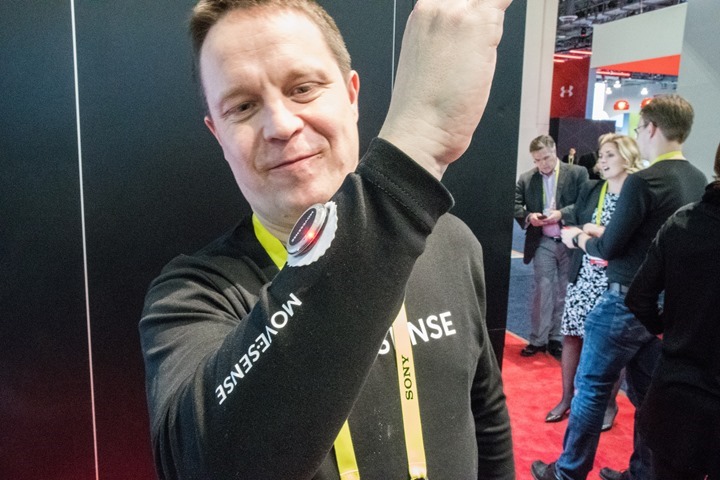
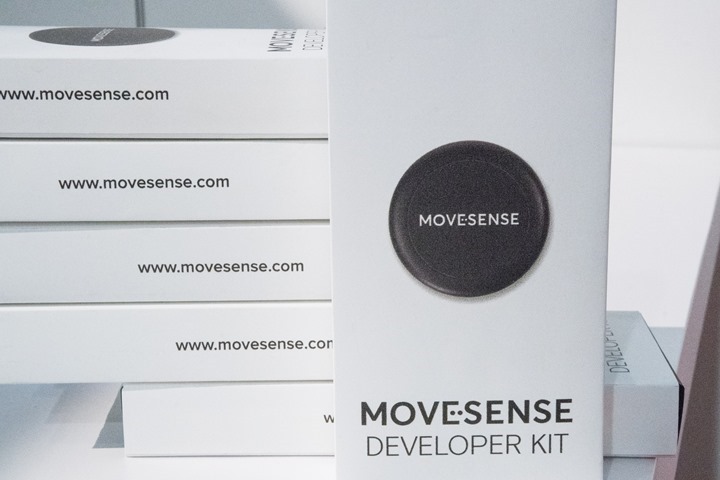
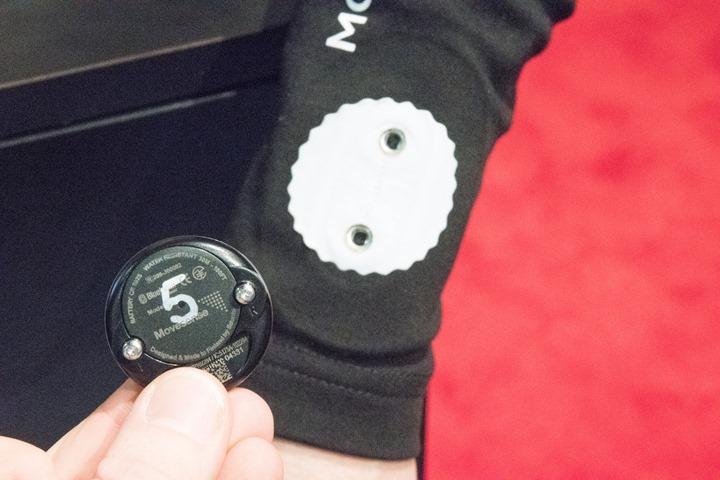
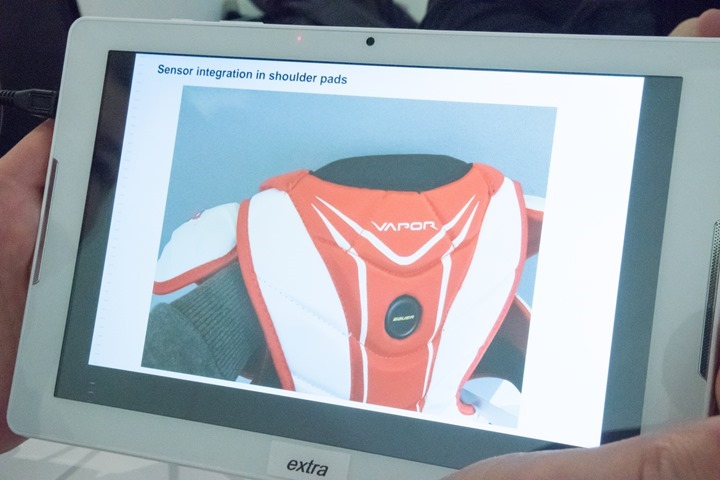


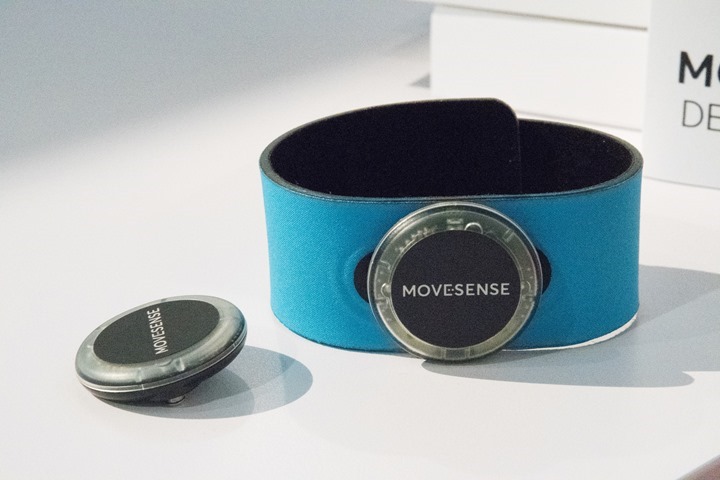





















There’s no reason this can’t be used to slim down watches a little too. If processing and batching data or even the storage happens in a pod then a bit of bulk can be cut from the display. With the right wearable GPS can move too. Rugby shirts have electronics behind the neck for instance which wouldn’t be a bad place for a GPS pod that also connects to hrm pads in the shirt.
“Or heck, even something like a pair of skies that can measure flex”
Sadly we only have the one sky where I live, and I don’t think that even flexes.
Your just not trying hard enough. Add more muscle.
Thanks!
you’re… ;)
Magic fairy dust! Reminds me of “Don’t let the magic smoke come out! (of a chip)”
I guess, in the end the customer just cares about experiencing good functionality (aka apps). So the question would be how fast Suunto (and/or their partners using Movesense) could deliver something like Garmin IQ Connect on this new platform. Competition is always a good thing.
Yet, there seems to be only a small time window left before Android Wear also becomes a threat to the traditional players in this personal sports and health space. (Personally, I am quite hesitant to give all my private health data to Alphabet – so Suunto (Europe) and Garmin (US) still could try to impress me with their offerings.)
True, Suunto still has the gap there on the apps side now in the Spartan series. Ironic given they were pretty much the first wearable to have apps.
With Fitbit announcing they plan to roll out apps ‘as soon as possible’ (likely this year), and Garmin already having them (plus Android Wear and Apple Watch apps), it’s clear the trend is all about app functionality.
I agree that if Android Wear can ship next month as the news today stands, then it’s going to have a good chance at mainstream wearables. However, the battery life of AW is still tough for endurance sports wearables. Not to mention that for whatever reason, AW devices have yet to excite consumers in any way close to what Fitbit/Garmin/Apple Watch (or even Pebble) has done (just looking at pure numbers shipped).
Quote “– ‘Medical grade’ ECG chip (debatable)”
I couldn’t find any information on Suunto website about ECG features. Can you confirm it is actually there?
Found it:
“A soft module with electrodes for integrating heart rate sensing into apparel is also available”
Heart rate chip is an optional assembly in the Movesense sensor and not yet supported in the API, so we didn’t include it in the first version of the spec sheet. Will be added to the specs as soon as we get the API finished.
Nice! With this we can make things like an open-source running power meter!
DCR: “…example comes from one of the lead product managers, who took to outfitting his kids hockey team with sensors…”
Simillar, but pretty expensive system (GPS + heart rate + accelerometers + … for monitoring and data analysis in team sports as football, rugby etc) is already produced by GPSports.
link to gpsports.com
Feature list is lacking LED (at least in the screenshots there is red dot). So it even has a one pixel user interface.
It’s listed on the tech sheet under I/O.
We used the led in our CES demo to flash for a successful high five that the sensor was trained to detect.
I was excited when Wahoo came out with the Tickr X and open access to the API. I thought there were lots of cool things that could be done with that. Yet I haven’t seen anyone using it (maybe I’ve just missed it). Even Wahoo’s in house implementations are pretty limited. They did a few nice things with the runfit app, indoor bike cadence and treadmill. Their 7 minute workout app was not very good. They haven’t even bothered/gotten around to making a CIQ app to leverage their running dynamics, or even cadence, in the Garmin environment.
So this is really cool and I hope it gets utilized. One of my favorite things about Wahoo is how open their products are and it’s cool to see Suunto moving in that direction.
Runscribe started, then quickly dumped, a kickstarter aimed at ‘wholesaling’ their pods to a B2B audience. Any idea why they dropped it ? Not enough initial interest, or could this have spooked them ?
It does seem like this is like an expandable Runscribe with I assume a Dallas 1-wire interface. But the advantage of the Runscribe is the rechargeable battery. Too bad the Movesense pod couldn’t be recharged through the pin.
Still, this does sound like a really exciting base to develop other applications off of. (yeah, poor grammar) I’d think that simple code examples would include a tutorial to make a speedo that straps to you bike hub (bonus points for making it a dead reckoning system). Cadence meter that straps to the crankarm. Either of those could include a tip-over alert. Add an IO interface to drive (externally powered) LEDs and you can make a POV display or basic compass (or both).
Is there any chance ANT+ will be made available on these units? I dropped them an email about it some time ago, but have not heard anything back.
looks more like something to compete with the Zephyr system with a pod that sits inside a strap with a shirt
I dig it. Put one on those wrist-slap things so you can throw it on your wrist or ankle and watch where your form falls apart on long workouts. It’s the point where things fall apart where we should work on pushing the boundaries.
Don’t you already know when it falls apart though? It’s when things get hard and you hurt.
That’s where I’m on the fence about this sensor technology. Without sounding like a flat-earther, most of it seems to exist “because we can”.
It’s all a bit like garmin vector cycling dynamics. It’s neat to know that my pedal imbalance grows from 49/51% to 46/54% when my legs get tired, but what the heck do I do with that information? Focus more on my tired left leg?
Maybe interesting use cases will come. The team monitoring platform may be useful for some.
This!
If it could help with swim technique that would be awesome. Not sure if there is such a thing currently.
The sensors and metrics currently on the market already exceed usefulness in actual training improvement, at least on a broad user base. And they have for some years now.
It’s hard to tell whether this is a case of “the sport phsiology need to catch up” or “let’s let people throw pasta against the wall and see what sticks”
Maybe both.
Boy Aaron, I don’t think that is true at all! I do believe we haven’t figured out what is and what isn’t useful yet. And some of the more useful data is still too raw or expensive. However, take something like power which has been used by elite athletes for a while and now is becoming more common for non-elite age groupers. When that becomes both inexpensive enough and integrated into simple training plans it can actually provide a much greater incremental benefit to beginning athletes. Training with power is being used now by the pros to maybe get an extra 1 or 2% increase in performance, in a beginner, if packaged properly (and inexpensive enough), I would not be surprised to see gains of 10 or 20%. We really are just at the beginning, not the end. I agree that we are at a point where people are just throwing out sensor data gathering platforms with little programming backup or understanding of what is useful, but that’s just because we are at the beginning.
Power for running is interesting, coming on the heels of run dynamics and muscle oxygenation sensors which never fully met their training potential compared to say – speed and heart-rate.
As I talk about in my upcoming review of Jim Vance’s power running book these new metrics are completely ignored. Why? Too much data too soon? Or bad ideas. Good questions.
I think the problem with most of the new metrics is there still isn’t any guidance on how to become faster with them, or, there isn’t much scientific support for the metrics themselves.
In terms of running power, given they can’t account for wind or ground type (i.e. sand/mud/etc…), it’s tougher to consider them fully legit yet. Close, but not yet.
I’d like to see someone build an accurate, affordable respiration rate senors, in a chest or abdominal strap. Is Suunto planning that on this platform?
Let me demonstrate my ignorance and ask ‘what is pin awareness’?
Ray, that was pretty poorly worded. Maybe call it something more like “expansion contacts,” or “accessory port contacts.”
I assume that “pin awareness” refers to the two electrical pins that it can use for sensor expansion. Actually, call it peripheral expansion since it could possibly also control external devices too (I made the post about having it drive LEDs).
This is how it can have an ECG, since that particular circuit is built into the strap that the pod connects to.
Yeah, Suunto used the term pins, and it’s also commonly used in the industry to call it what they are. I’ll try and re-word.
Virtually all HR chest straps have the connectors (pins into little sockets). It’s just that these can actually ‘detect’ what device that are connected to.
It actually is what is called 1-wire. It is a serial communications protocol original from Dallas Semi and now available from Maxim. More info in link to maximintegrated.com
Ray, On Suunto’s movesense.com web site they are taking applications for 50 lucky developers. Two applications they are showing along with their application.
link to movesense.com – kids activity tracker
link to movesense.com – dog activity tracker
I wonder if you and The Girl will be developing a toddler movement, proximity alert, tracker. Not to mention knowing how much one has to exercise after eating one of her cupcakes. grin
That’s funny. Two peas in a pod!
Really don’t see the point of this. A solution to a problem that didn’t exist.
You capture data…so what? Most people outside of pro sports haven’t a clue how to use that data and have no need to capture it in the first place.
I can think of many far fetched but still quite interesting scenarios. In fact, haven’t the entire technological odyssey been one large futility voyage? Who *really* needed any of the gadgets we all run around with. But here goes:
1) Gyroscope and accelerometer: parkour, gymnastics, snowboards, downhill mtb a.o. where body orientation analysis makes good sense.
2) Compass: mount Movesense on fixed jigs to accommodate headings with wearables, e.g. put it on a kayak or a dog sleigh and still be able to read accurate headings from a wrist worn device.
3) Temperature: one word -> Tempe
The most important part, imho, is to give developers a solid hardware platform they couldn’t possibly make themselves, and let them come up with the great ideas.
Agree with Thomas – there’s tons of uses here that may not be super obvious today, nor even applicable to a runner/cyclist/etc crowd.
Further, the whole point of moving sensors more and more into sport is so that people outside of the pros can take advantage of it. It wasn’t that long ago that the only people using ‘action cams’ were pros. These days, everyone has access to technology.
Same goes for power meters in cycling.
Very interesting proposal. But how come there is no way to get a sample? or no demo app to download? It’s hard for a startup to dedicate scarce resources on a new technology if you can’t try it out and evaluate before going through the program.
I myself am an app developer and thinking a power meter for running would be interesting to develop. Also the EKG feature is interesting – it opens up the device not just for sports but medical applications
On the page linked, they have a ‘Get started’ page, including application for the developer beta. While I certainly wouldn’t guarantee it, I’d take a guess that they’ll send just about anyone a unit that has some rough ideas that they want to implement with it.
I find most companies that do developer-focused stuff will happily send folks units. Though, I do agree a simple ordering system here to straight-up buy it would be ideal. But I understand how they may want to keep things a bit tighter in the first few weeks/etc to work out any kinks.
Catching a cheating partner in business or catching a cheating spouse during an infidelity investigation boils down to a due diligence inquiry
Can you trust your partner?
Don’t take anymore chances… let’s findout the truth
Dispel any doubt or mitigate damages with the results of our best services
We get to the truth and buttom line fast
Hire a team of professional hackers
(Snipped out useful portions of SPAM)
Wonder where you’d have to put the sensor to detect that ! ;)
Hmm, yeah, your partner would probably notice you installing it.
Funny…I snipped out the ‘useful’ portions of SPAM, but left the rest for thread entertainment factor. :)
This would clearly require GPS and a cellular connection!
As a rockclimber, I could imagine one of those on each wrist and, boom, you’ve got a move counter for climbing (only some kickstarter climbers have attempted such a device). Acceleromter and gyroscope could be used to work out orientation of holds, force generated, etc.
Impressive concept.
Very interesting.
Could these devices be setup as a “daisy chain” of sorts and placed in specific parts of your body to measure spatial positioning (if thats the right term). What Im thinking is take sports that require multiple parts of the body to execute a powerful movement. A punch for example – would require the right movement of arms, hips, shoulders and ankles to ensure maximum force is transferred. Could a set of these placed all around the body give coaching on how to punch power powerfully/effectively? (likewise with kicks etc)
Brining it back to cycling could something like this be a cheap answer to bike fitting? place these bad boys where they usually put the dots for computer modelling and then the device could assist in automagically model ideal bike fit?
They had a CES demo showing how it could be used to recognize a gesture – such as a high-5. Which is kinda-sorta-barely like bike fitting. I think using a BT app in conjuction you might get that sorta spatial awareness, though it would likely require a fair bit of logic and calibration.
Still, my bet is once someone did that upfront leg-work, it’d probably be pretty darn cheap compared to the solutions out there. Might be ideal for coaches that can’t afford a Retul or similar.